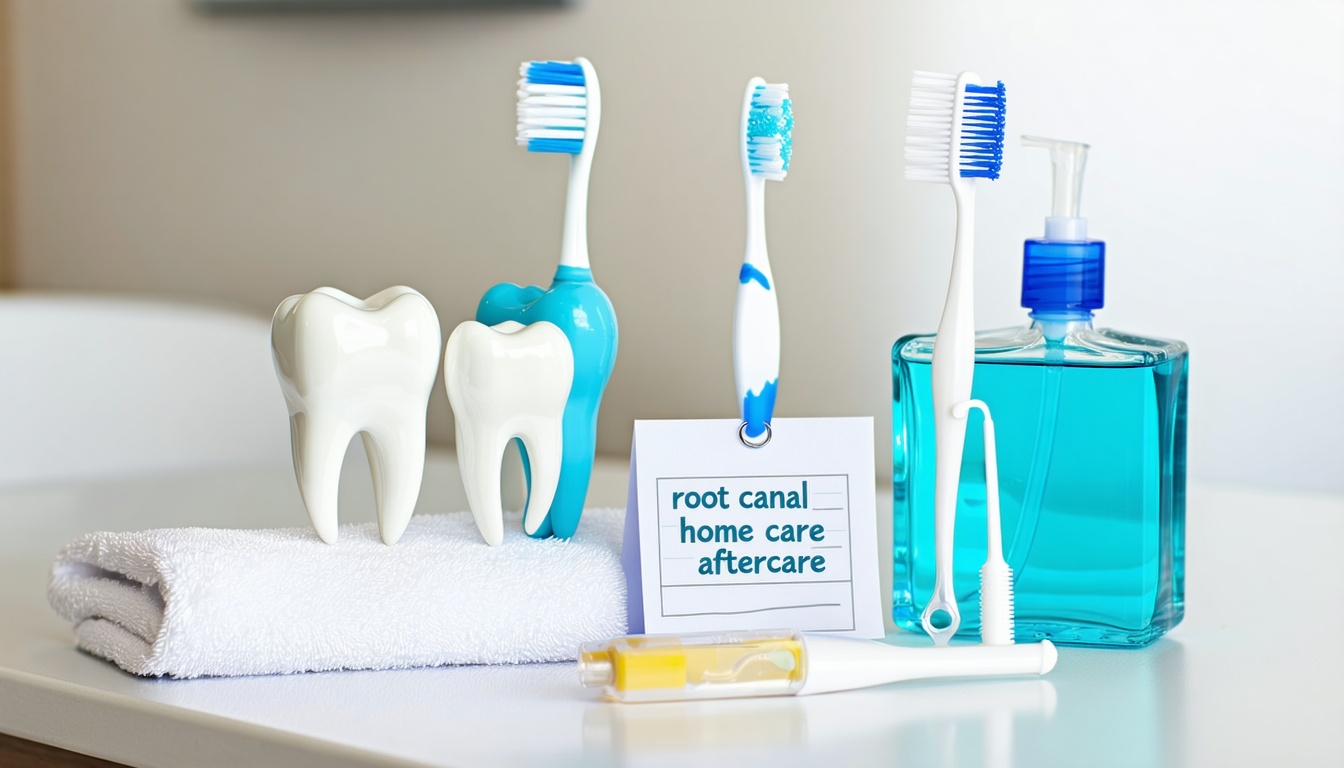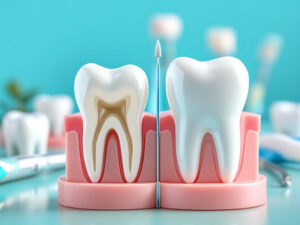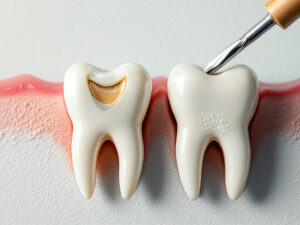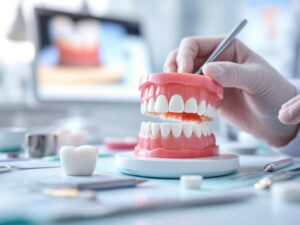Understanding Root Canal Procedures
Root Canal Basics
A root canal is a dental procedure designed to treat infection or damage within the pulp of a tooth. This condition often results in persistent tooth pain, sensitivity, and, if left untreated, could lead to tooth loss. During the procedure, your dentist will remove the infected or damaged pulp, clean the inside of the tooth, and seal it to prevent future problems. Most people can expect some discomfort during and after the treatment; however, excessive pain is not typical. With modern technology and anesthetics, the procedure is quick, safe, and usually pain-free (Medical News Today).
For a deeper understanding, explore our articles on what is a root canal and what is root canal treatment.
Importance of Root Canal Treatment
Root canal treatment plays a critical role in preserving your natural teeth and maintaining oral health. By removing infection from the tooth’s pulp, you can significantly reduce the risk of further issues, such as abscesses or bone loss. The success rate of root canal treatment is approximately 95%, with many treated teeth lasting a lifetime. Proper aftercare is essential for successful outcomes (Sundance Smiles).
To help visualize this, here is a table summarizing key factors associated with root canal success:
| Factor | Impact |
|---|---|
| Treatment Precision | Reduces risk of complications |
| Aftercare Practices | Enhances healing and longevity |
| Regular Dental Visits | Helps in early detection of issues |
Understanding the basics and importance of root canal treatment can empower you to make informed decisions about your dental care. For more details on the procedure, check out our guide on root canal procedure steps and find out how long does a root canal take.
Post-Root Canal Care at Home
After undergoing a root canal, proper at-home care is essential to ensure a smooth recovery. This section focuses on managing discomfort, dietary recommendations, and maintaining oral hygiene following the procedure.
Managing Discomfort
You may experience mild discomfort for a few days after your root canal procedure. According to Midtown Endodontics, pain should significantly decrease by the end of the first week. To alleviate discomfort, consider using over-the-counter or prescription pain relievers. It’s vital to follow the instructions carefully and contact your endodontist if the pain persists for more than a few days, as suggested by Medical News Today.
| Medication Type | Recommended Use |
|---|---|
| Over-the-Counter Pain Relievers | As directed to manage discomfort |
| Prescription Pain Relievers | For more severe pain, if necessary |
Eating After a Root Canal
It’s important to be mindful of your diet following a root canal. You can eat about 30 to 45 minutes after the procedure, allowing time for the temporary filling to harden. However, wait until the anesthetic wears off to avoid accidentally biting your cheek or tongue. Soft foods are highly recommended during the recovery period, as they prevent stress and irritation to the treated tooth. This includes options such as:
- Proteins (e.g., yogurt, scrambled eggs)
- Soft fruits (e.g., bananas, applesauce)
- Cooked vegetables
- Soft grains (e.g., oatmeal, rice)
Foods to avoid include anything hard, crunchy, or sticky, which might irritate the treated area or damage the temporary filling. For more information on dietary recommendations after a root canal, visit what to eat after a root canal.
Oral Hygiene Practices
Maintaining good oral hygiene is crucial after your root canal. Follow these practices to keep your mouth healthy:
- Brush Gently: Avoid brushing directly on the treated tooth for the first few days. When you do resume brushing in that area, use a soft-bristled toothbrush.
- Floss Carefully: Be cautious when flossing around the treated tooth to prevent dislodging the temporary filling.
- Rinse with Saltwater: A saltwater rinse can help reduce swelling and promote healing. Mix half a teaspoon of salt in a glass of warm water and rinse gently.
For additional guidance on keeping your teeth healthy after a root canal, consider exploring our article on root canal home care aftercare. If you notice any signs of infection or complications, seek professional advice promptly.
Recognizing Signs of Infection
After undergoing a root canal treatment, paying close attention to your dental health is crucial. Recognizing the signs of infection can help ensure a smooth recovery and prevent complications.
Symptoms of Infection
It’s important to be aware of the following symptoms that may indicate an infection after a root canal:
| Symptom | Description |
|---|---|
| Persistent or Worsening Pain | A continuous or intensifying ache in the treated area. |
| Swelling and Tenderness | Noticeable swelling in the gums or surrounding areas. |
| Fever | A rise in body temperature signaling an infection. |
| Pus Drainage | Discharge of pus from the site, indicating a problem. |
| Bad Taste in the Mouth | An unpleasant taste, often associated with infection. |
If you experience any of these symptoms, it’s important to seek timely professional help. Immediate intervention can prevent further complications (The Dental People, Winfield Family Dentistry).
Home Remedies for Root Canal Infection
While professional treatment is essential, you can also take steps at home to alleviate discomfort and manage mild symptoms until you can see a dentist:
- Warm Salt Water Rinse: Dissolve 1 teaspoon of salt in a glass of warm water and rinse your mouth to help reduce inflammation.
- Cold Compress: Apply a cold pack on the outside of your cheek for 15-20 minutes to minimize swelling and pain.
- Over-the-Counter Pain Relief: Non-prescription medications like ibuprofen or acetaminophen can provide temporary relief.
These remedies can assist in managing minor symptoms, but they are not a substitute for professional care. If symptoms persist or worsen, it may indicate a more serious issue requiring immediate attention (North Hollywood Family Dental).
Professional Intervention
Timely professional intervention is vital in managing infections related to your root canal treatment. If you experience any of the following severe symptoms, seek dental assistance promptly:
- Severe toothache or pain
- Swelling and tenderness in the gums
- Sensitivity to heat or cold
- Persistent bad breath or taste
- Swollen lymph nodes
These symptoms may indicate a more serious infection that cannot be adequately managed at home. Understanding the importance of monitoring your recovery will help you maintain a healthy smile after your root canal treatment.
For further insight into managing pain and ensuring proper aftercare, refer to our articles on root canal pain relief tips and root canal recovery time.
Ensuring Successful Recovery
After undergoing a root canal procedure, it is essential to focus on your recovery to ensure successful healing and maintain the health of your tooth. This section provides guidance on follow-up appointments, managing any potential complications, and the important role of dental professionals in your recovery journey.
Follow-Up Appointments
Frequent follow-up appointments with your dentist are crucial for monitoring the healing process after a root canal. These visits allow your dentist to assess how well the tooth is recovering and to determine if a permanent crown is necessary. According to Sundance Smiles, timely follow-ups are pivotal in maintaining the longevity of root canal-treated teeth.
| Appointment Type | Purpose |
|---|---|
| Initial Follow-Up | Check healing progress |
| Crown Placement | Assess and place permanent crown if required |
| Routine Check-Ups | Monitor overall dental health |
Complications Management
Although complications are rare, it is vital to be aware of them and how to manage them effectively. Recognizing signs of infection early is essential for prompt treatment. Some common signs that may indicate a complication after a root canal include increased pain, swelling, or fever. Timely intervention can prevent more serious issues and supports a swift recovery (Wicker Park Dental Group).
To manage complications:
- Monitor for unusual symptoms such as persistent pain or swelling.
- Maintain good oral hygiene.
- Stay informed and ready to consult your dentist if required.
Role of Dental Professionals
Dental professionals play a pivotal role in ensuring a smooth recovery after a root canal. They not only perform the procedure but also provide essential guidance on post-operative care, monitor healing, and address any complications that arise. Regular visits to your dentist are crucial for assessing the tooth’s condition and preventing any long-term issues.
Professionals can also recommend appropriate products and practices to help with recovery and long-term care. For comprehensive questions regarding any aspect of root canals, refer to our root canal FAQ.
By prioritizing follow-up appointments, addressing potential complications promptly, and relying on the expertise of dental professionals, you can ensure a successful recovery and maintain the health of your smile for years to come.
Long-Term Maintenance Tips
After undergoing root canal treatment, maintaining your oral health is essential for ensuring that your teeth remain strong and functional. Here are several long-term maintenance tips to keep in mind.
Proper Oral Hygiene
Establishing a consistent oral hygiene routine is crucial for supporting the healing of your root canal-treated tooth. It is recommended to brush at least twice a day and floss daily to remove plaque and prevent infections. Here is a quick checklist for your oral care:
| Oral Hygiene Action | Frequency |
|---|---|
| Brushing with fluoride toothpaste | 2 times daily |
| Flossing | Daily |
| Rinsing with an antibacterial mouthwash | Recommended 1-2 times weekly |
It’s important to avoid tobacco and alcohol in the first few days following your procedure, as these substances can interfere with healing and increase the risk of complications (Sundance Smiles).
For more information about proper oral hygiene steps, refer to our article on what is a root canal.
Lifestyle Considerations
Your lifestyle choices can have a significant impact on the longevity of root canal-treated teeth. Here are some guidelines to follow:
- Dietary Choices: Consume a balanced diet rich in vitamins and minerals to promote overall oral health. Limit sugary snacks and drinks that can lead to tooth decay.
- Regular Dental Visits: Schedule routine check-ups with your dentist. These appointments help monitor healing and allow for placement of a permanent crown if necessary (Sundance Smiles).
- Timely Intervention: Stay informed about signs of infection and contact your dentist if you experience increased pain or swelling. Early intervention is vital for preventing complications (Wicker Park Dental Group).
Monitoring Root Canal-Treated Teeth
To ensure long-term success following root canal treatment, keep an eye on your oral health. Here are some signs you should be aware of:
| Signs to Monitor | Action |
|---|---|
| Increased pain or sensitivity | Contact your dentist |
| Swelling around the treated area | Schedule an appointment |
| Discoloration of the tooth | Discuss options with your dentist |
The success rate of root canal treatments is approximately 95%, with many treated teeth lasting a lifetime, underscoring the importance of proper aftercare (Sundance Smiles). Make sure to attend all follow-up appointments to monitor the health of your teeth and maintain optimal oral hygiene.
For additional resources regarding root canal treatment, check out root canal vs tooth extraction and stay informed about root canal complications.










